Looking for a destination full of mystery, beauty, and spiritual depth? Laos, nestled in the heart of Asia, is packed with landmarks that tell powerful stories—from golden stupas to ancient stone jars.
As a traveler or culture lover, you deserve more than just pretty views—you want meaning, history, and wonder. That’s exactly what you’ll find through the most iconic Laos landmarks, where every site offers a glimpse into the country’s soul.
At Landmarks Architect, we’ll guide you through the top landmarks in Laos, including sacred Buddhist temples, royal monuments, and breathtaking natural sites.
In this article, you’ll explore:
- Spiritual icons like Pha That Luang and Wat Xieng Thong
- Mystical places like the Plain of Jars
- Majestic historical Laos landmarks such as Wat Phu and the Royal Palace Museum
- Cultural and natural gems like Buddha Park and Kuang Si Falls
Ready to explore the timeless charm of Laos? Let’s explore the landmarks that make it a true hidden treasure in Asia.

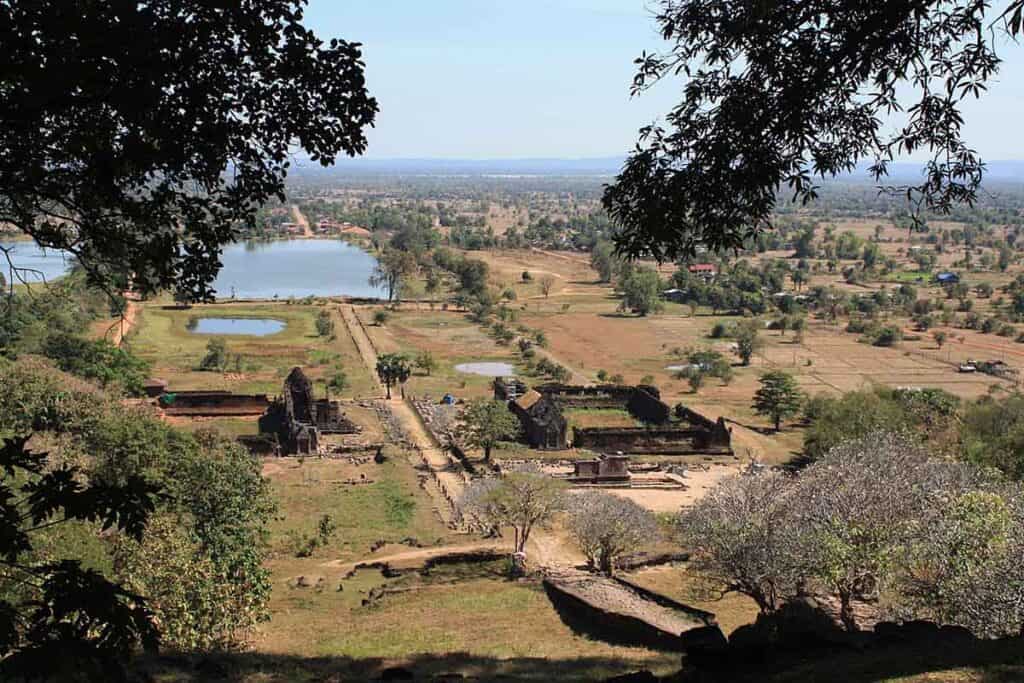
3 Most Famous Laos Landmarks
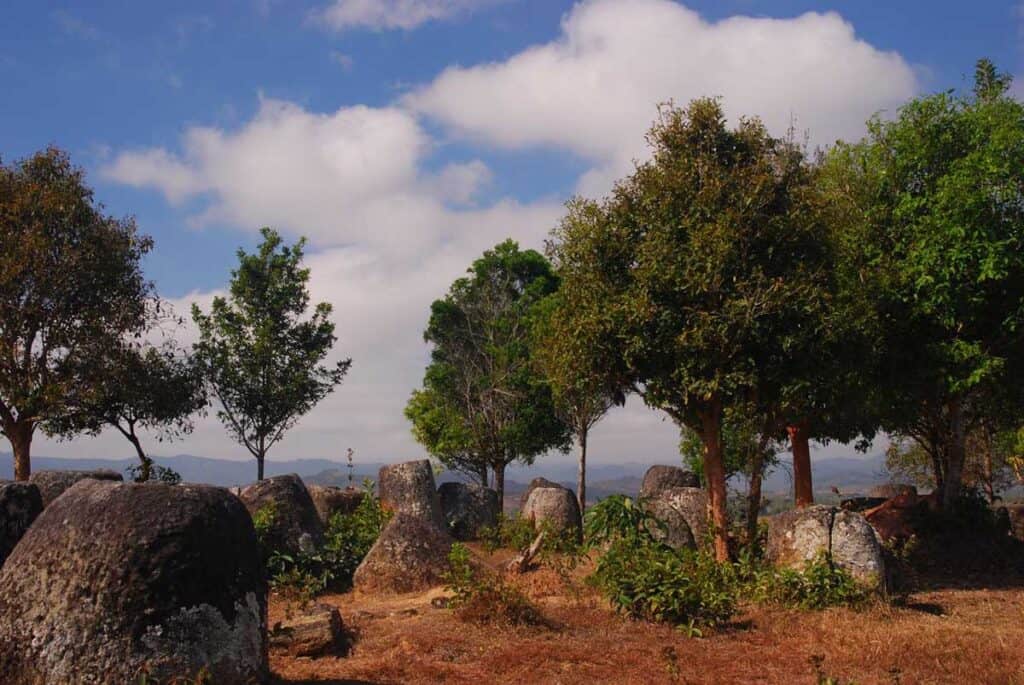
Laos has many famous landmarks. These places show its rich history and culture. Three well-known sites are Pha That Luang, Wat Xieng Thong, and the Plain of Jars.
Each one tells a special story about the Laotian people and their beliefs while also reflecting different types of architectural styles that have shaped the country’s spiritual and historical identity.
1. Pha That Luang
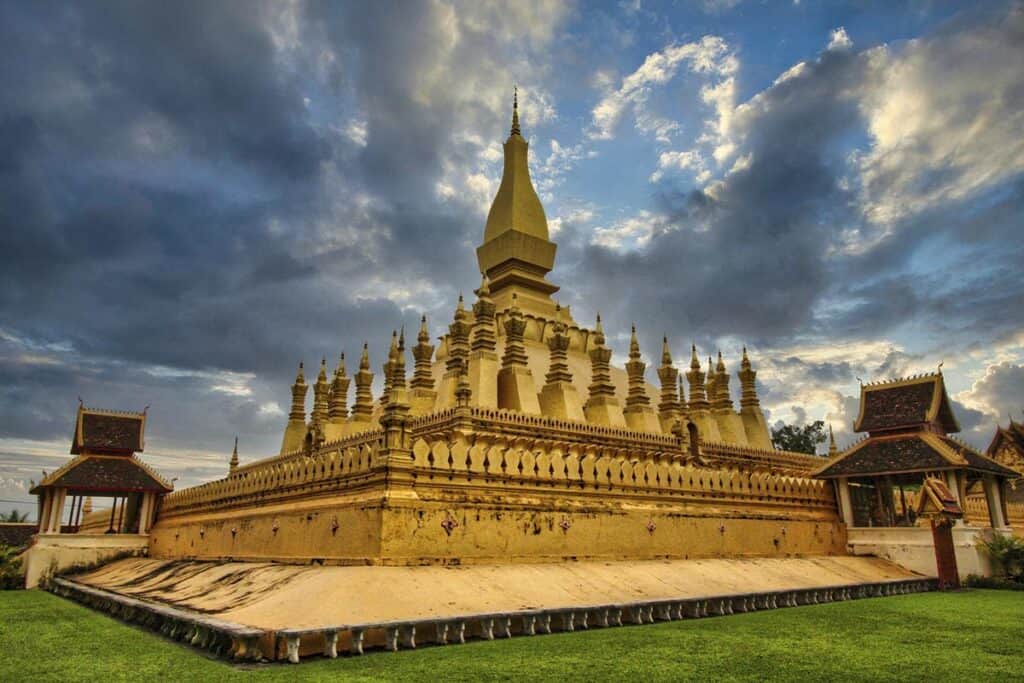
Pha That Luang is the most important national monument in Laos. It is also one of the country’s most famous landmarks. This large stupa is in Vientiane, the capital city. It is a strong symbol of the Lao people, their Buddhist faith, and their strength.
Although the site has been used for religious purposes since at least the 3rd century, the current stupa was built in the 1500s. It has been rebuilt many times after invasions. Now, it stands 45 meters tall and is covered in gold. It shines brightly in the city skyline.
Many people visit it each year. The temple also holds big festivals that celebrate Lao culture, Buddhism, and spiritual life in Asia.
2. Wat Xieng Thong
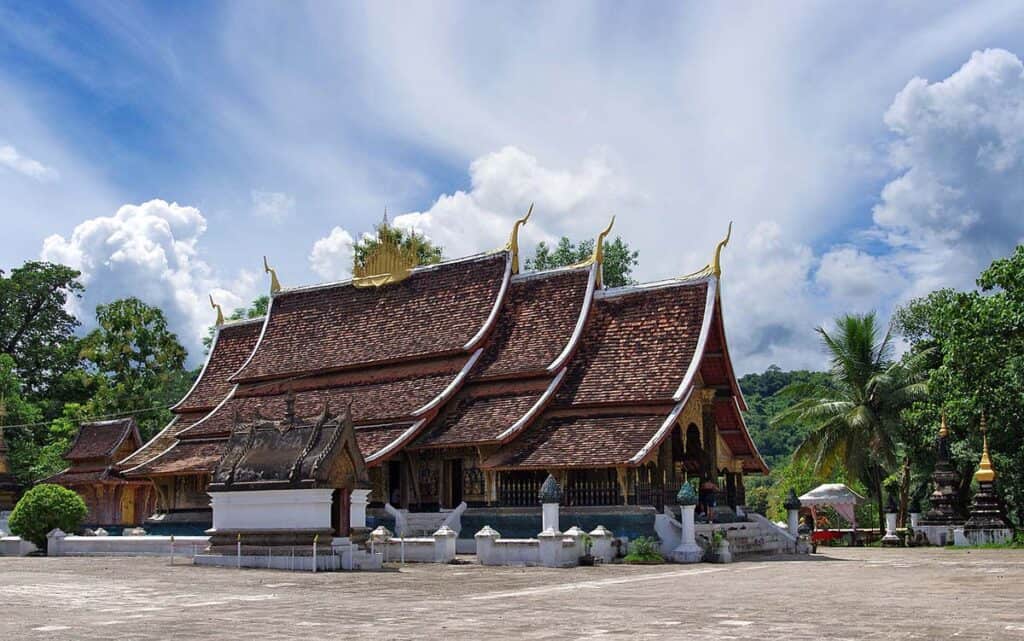
Wat Xieng Thong is a famous Buddhist temple in Luang Prabang. This city is a UNESCO World Heritage Site. The temple was built in the 1500s. It is known as one of the most beautiful buildings in Laos. Visitors love its detailed art and colorful mosaics.
The main hall is bright and full of rich designs. The golden entrance is special and eye-catching. The temple sits by the Mekong River, making it feel calm and quiet. Wat Xieng Thong is a place for prayer and culture. It shows the art and history of Laos.
As one of the most admired landmarks in Laos, it stands out among other Laos landmarks for its beauty and spiritual importance. Many travelers visit to enjoy its peaceful mood and traditional charm.
See Also Indonesia Landmarks
3. Plain of Jars
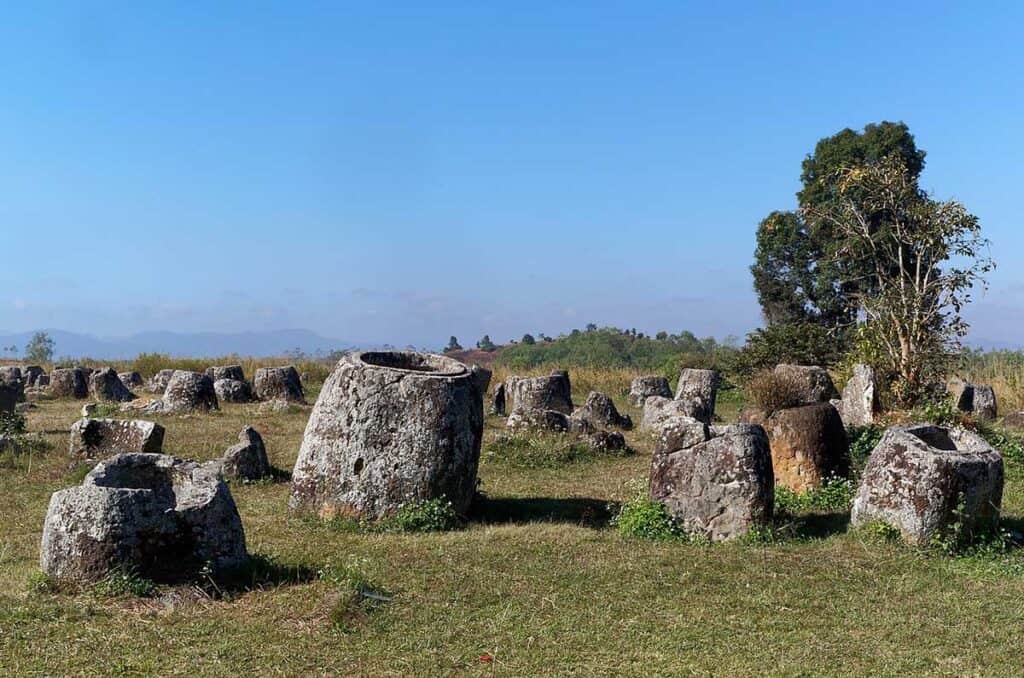
The Plain of Jars is a strange and old site in the Xieng Khouang Province. It has thousands of big stone jars spread across the land. Some of them are from the Iron Age. People think the jars were used for burials, but no one knows for sure.
This site looks into Laos’s ancient past. Visitors can walk among the jars and hear the stories about them. The area also has great views of the hills and fields.
As one of the most mysterious Laos landmarks, the Plain of Jars is a unique archaeological landscape in Laos that shows the rich history of the country. It still surprises and interests people today.
Historical Laos Landmarks
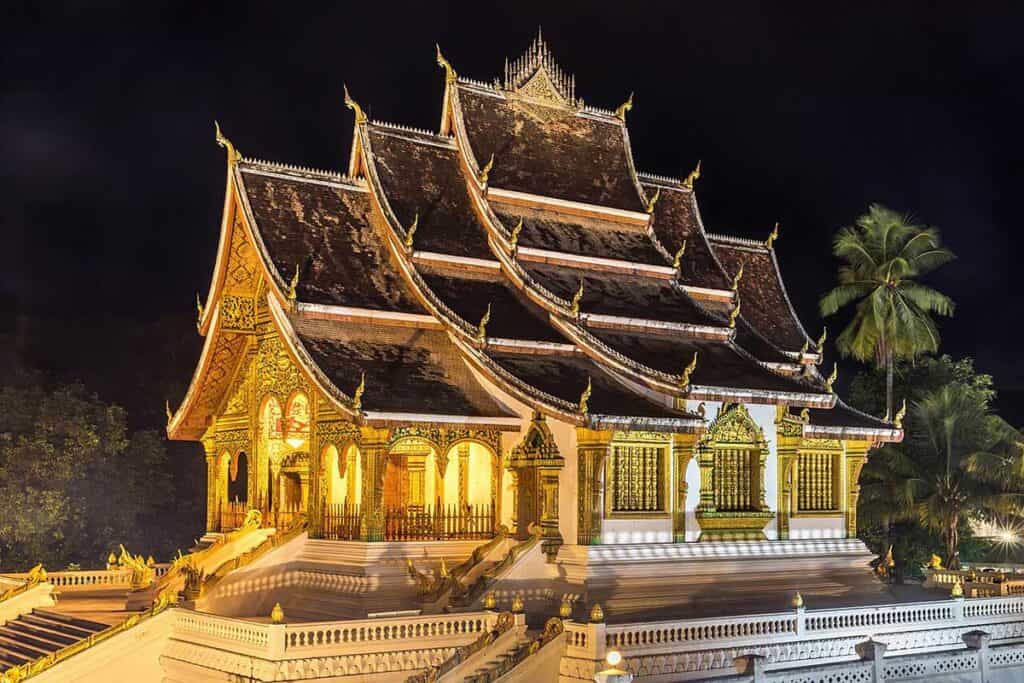
Laos has many important historical landmarks. These sites show the country’s rich culture and history. They also show the influences from nearby countries like Cambodia, Thailand, Vietnam, and Myanmar. Here are three famous Laos landmarks to visit:
4. Wat Phu (Wat Phou)
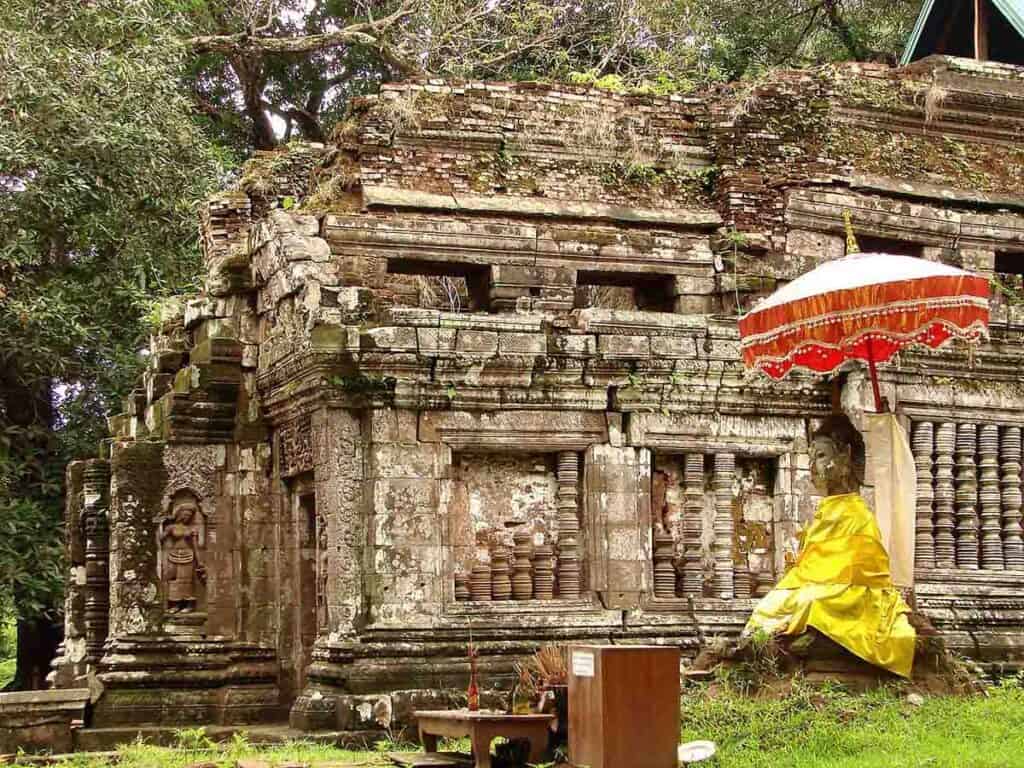
Wat Phu, or Wat Phou, is an ancient temple complex in Southern Laos. It is a UNESCO World Heritage Site. While the site has been used since the 5th century, most of the current temple structures were built between the 11th and 13th centuries and were dedicated to the Hindu god Shiva.
Today, it shows beautiful Buddhist art, architecture, and Buddhist statues. Visitors can see detailed carvings and big stone structures. There is a stone ladder that leads to the upper sanctuary.
The temple sits at the foot of Mount Phou Kao, offering amazing views of the surrounding area. People call it the “spirit city” because of its deep history and spiritual importance to the people of Laos.
5. Royal Palace Museum
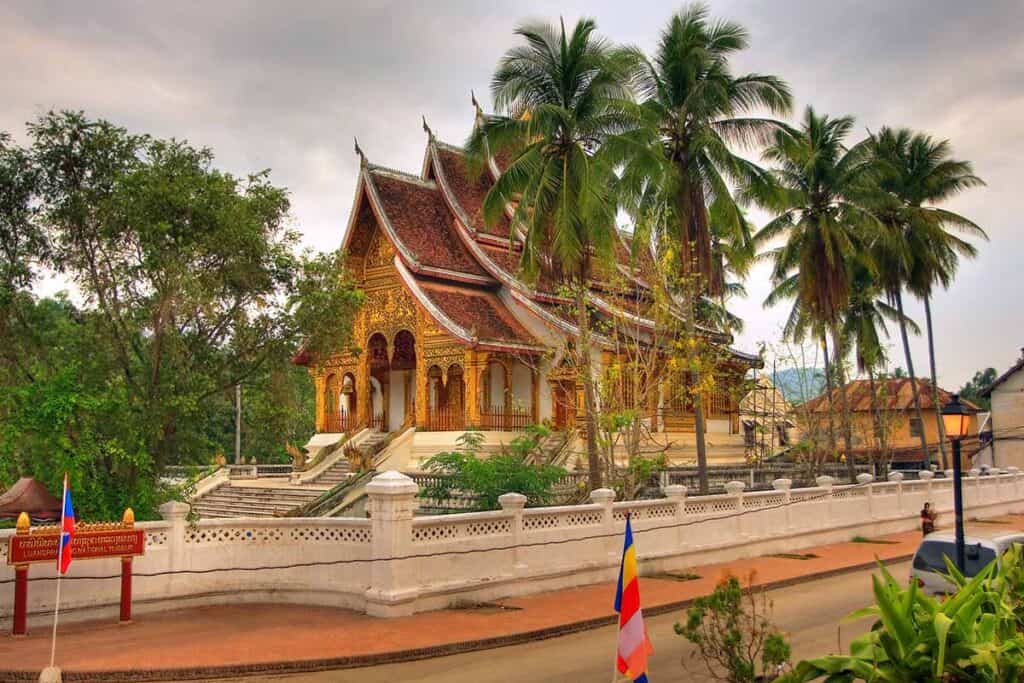
The Royal Palace Museum is in Luang Prabang, the former royal capital of Laos. It was once the home of the Laotian kings. The palace was built in 1904. It has a mix of Lao and French Beaux-Arts styles.. Inside, the museum displays royal items like clothes, weapons, and religious objects.
The throne room is especially beautiful, with golden decorations and important symbols. Visitors can also see the Phra Bang, a famous royal relic. This museum is an important national monument. It helps people learn about Laos’s royal history.
6. That Dam (Black Stupa)
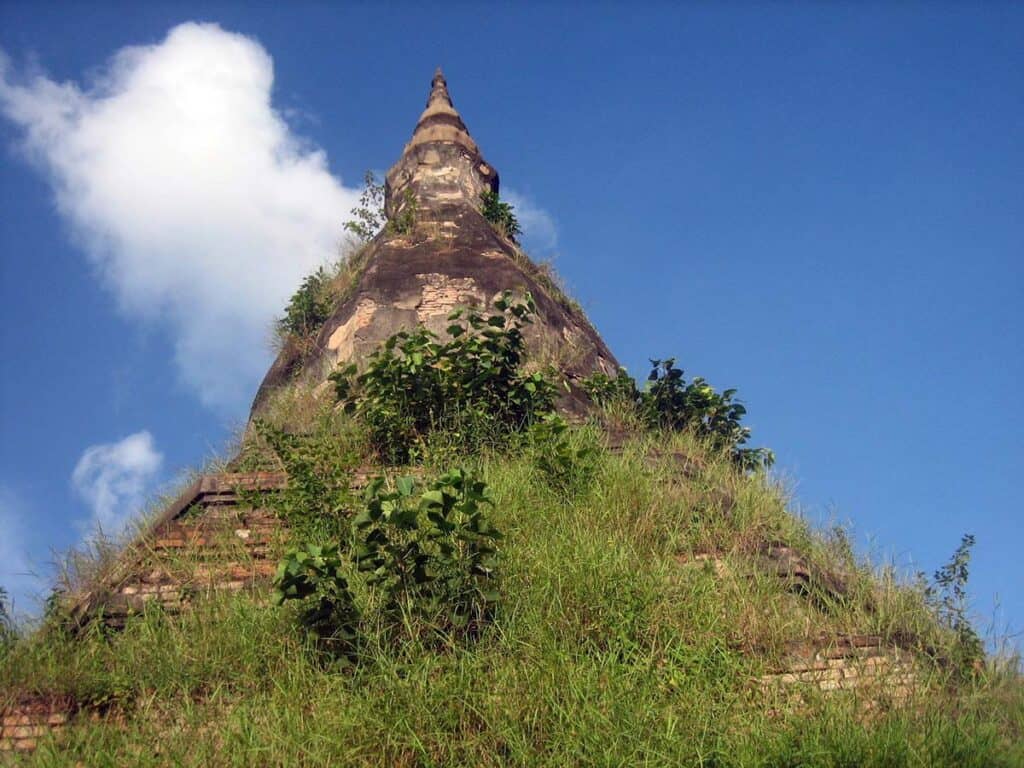
That Dam, or the Black Stupa, is a historic site in the Capital, Vientiane. It is believed to be from the 1500s and has many legends. The stupa was built to hold the relics of the Buddha. Over time, it has been repaired many times.
The stupa is surrounded by green plants and is a symbol of protection for the old city. A legend says a magical serpent guards the stupa, which makes it even more special. That Dam shows the strength of Lao culture through difficult times and reminds people of the country’s spiritual history.
Cultural Laos Landmarks

Laos is rich in cultural landmarks that reflect its storied history and traditions. Key examples include Patuxai and Buddha Park, which showcase the unique blend of Lao culture, Buddhism, and local mythology.
7. Patuxai

Patuxai, located in the capital city of Vientiane, is a monumental arch that symbolizes victory. Often compared to the Arc de Triomphe in Paris, it was built in the late 1950s to honor Laotian soldiers who fought in past wars, including the struggle for independence.
Visitors can climb to the top for stunning views of the city. The structure features intricate designs and sculptures of mythological creatures and four-armed deities, reflecting the spiritual beliefs of the Lao people. Patuxai is more than just a building—it stands as a powerful symbol of Laos’s resilience, culture, and national pride.
See Also Ancient Indian Art and Architecture
8. Buddha Park

Buddha Park, or Xieng Khuan, is near Vientiane. It has over 200 big sculptures. The park mixes Buddhist and Hindu stories, showing many figures from both beliefs.
One of the main attractions is the giant reclining Buddha. There are also detailed sculptures of demons, like the “Demon’s Mouth,” which visitors can enter. The park is an important place for culture and spirit. It draws both locals and tourists. The peaceful setting and beautiful art make Buddha Park a must-see in Laos.
Natural Laos Landmarks
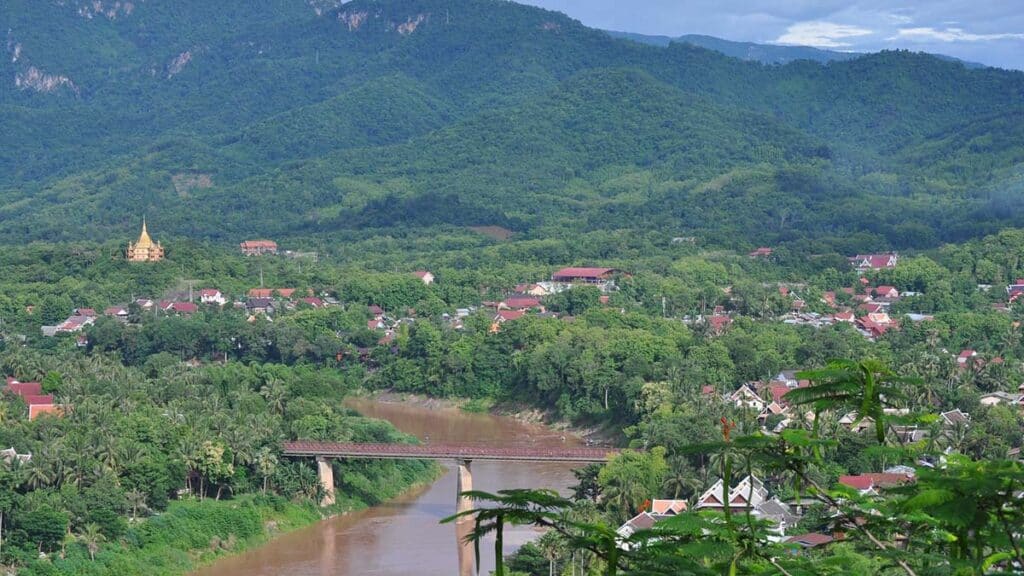
Laos is full of natural beauty, with many Laos landmarks that attract visitors. The Mekong River is one of the most important features of the country. It stretches across the land, providing a key waterway and beautiful views.
Mount Phu Si is a famous landmark in Luang Prabang. From the top, you can see amazing views of the area. It is a great place to hike and explore.
Kuang Si Falls is another stunning spot. The waterfalls create clear blue pools where you can swim. The falls are surrounded by green forests, making the views even more breathtaking.
The Plain of Jars has mysterious stone jars spread across the land. It is a UNESCO World Heritage Site and shows Laos’s rich history and unique landscape. It is also one of the most fascinating landmarks in Laos.
These natural landmarks give a tour of Laos’s beauty and diversity. They also offer chances for adventure, relaxation, and discovery.
Laos Landmarks: A Recap
Laos’ landmarks show the true spirit of the country. They include ancient stone sites, golden stupas, and French-style monuments. Each place—whether in Luang Prabang, Vientiane, or the countryside—shares a story. These stories come from religion, royalty, or local myths.
Laos has a mix of nature, Buddhist temples, and old ruins. Together, they show the deep roots of Lao culture. They also connect Laos to other parts of Southeast Asia. These landmarks take travelers on a journey through faith, history, and art.









